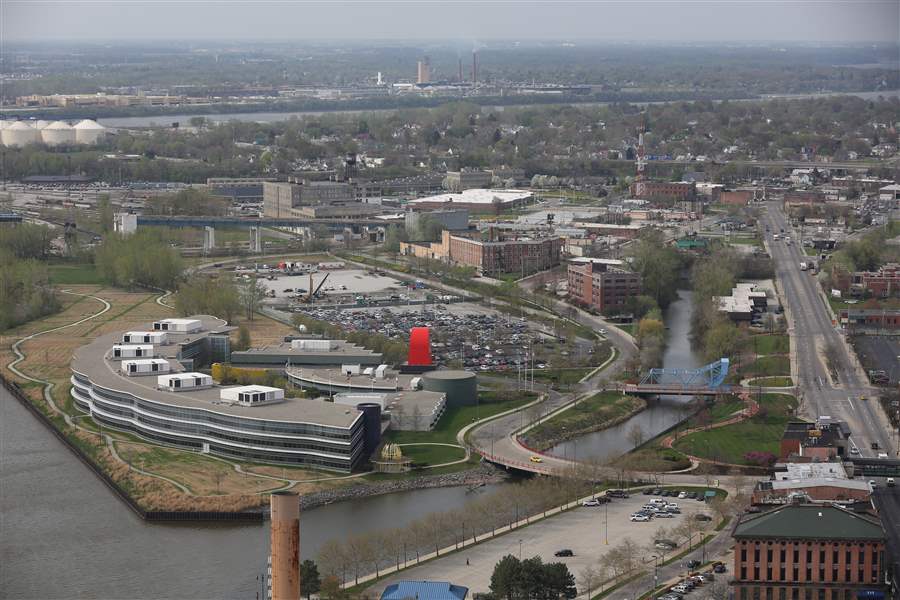
Owens Corning pitches products in hopes of fixing crumbling infrastructure
2/27/2018
Owens Corning along Maumee River and Swan Creek in downtown Toledo.
The Blade/Dave Zapotosky
Buy This Image
About 70 civil engineers and others in related construction fields gathered at Owens Corning World Headquarters on Tuesday essentially to allow the building products maker to tout its latest construction products made from composites.
But while the three-hour “Sustainable Infrastructure: Building to Last” forum may have had the slight feel of a sales pitch, it also held out the promise of potentially addressing a very real problem those in the business of building bridges and roads face — corrosion.
The hard fact is America’s infrastructure is crumbling, said Arnaud Genis, president of OC’s composites division. A survey by a top engineering group gave the country’s infrastructure a grade of “D+” in term of its condition.
“We can’t afford to have this ‘D+’ become an ‘F’ grade, Mr. Genis said. Owens Corning researchers have come up with new composite materials, he added, that are strong, durable, cost-effective, easy to use, and best of all, resistant to corrosion.
Toledo Mayor Wade Kapszukiewicz, who gave the forum’s opening address, said being able to gather information on OC’s composites for use in concrete reinforcement helped persuade him to be a speaker.
“From our perspective, if this composite rebar is lighter — and it is — and if it isn’t as subject to corrosion as much — and it isn’t — what that means is our roads could last longer if reinforced with this item,” the mayor said. “It wouldn’t mean we wouldn’t have any problems at all, but it would mean we would not have to spend the resources in real-time to keep our bridges safe, our roads repaired, and our infrastructure looking good.”
Pat McColley, deputy director of the Ohio Department of Transportation’s District 2, which includes eight counties in northwest Ohio, including 950 bridges and 3,800 miles and 6,000 culverts, said ODOT is among the best departments nationally at clearing roads of snow and ice.
But doing that means using salt, which means corrosion, he said.
Owens Corning’s Glass Fiber Reinforced Polymers, which can be used to make rebar that strengthens concrete in roads and bridges, has ODOT “very excited about the potential,” Mr. McColley said. It could mean bridges and roads will last longer, thereby providing cost savings and reducing traffic delays.
Matt Chynoweth, director of the Michigan Department of Transportation’s Bureau of Bridges and Structures, said his bureau already has used reinforced fiber polymers to replace a bridge over Plum Creek near Eight Mile Road in Wayne County. “We’re not going back there for 100 years,” he said, referring to its expected lifespan.
“It’s definitely going to benefit future generations that won’t have to deal with this problem” of crumbling infrastructure, Mr. Chynoweth said.
Contact Jon Chavez at jchavez@theblade.com or 419-724-6128.